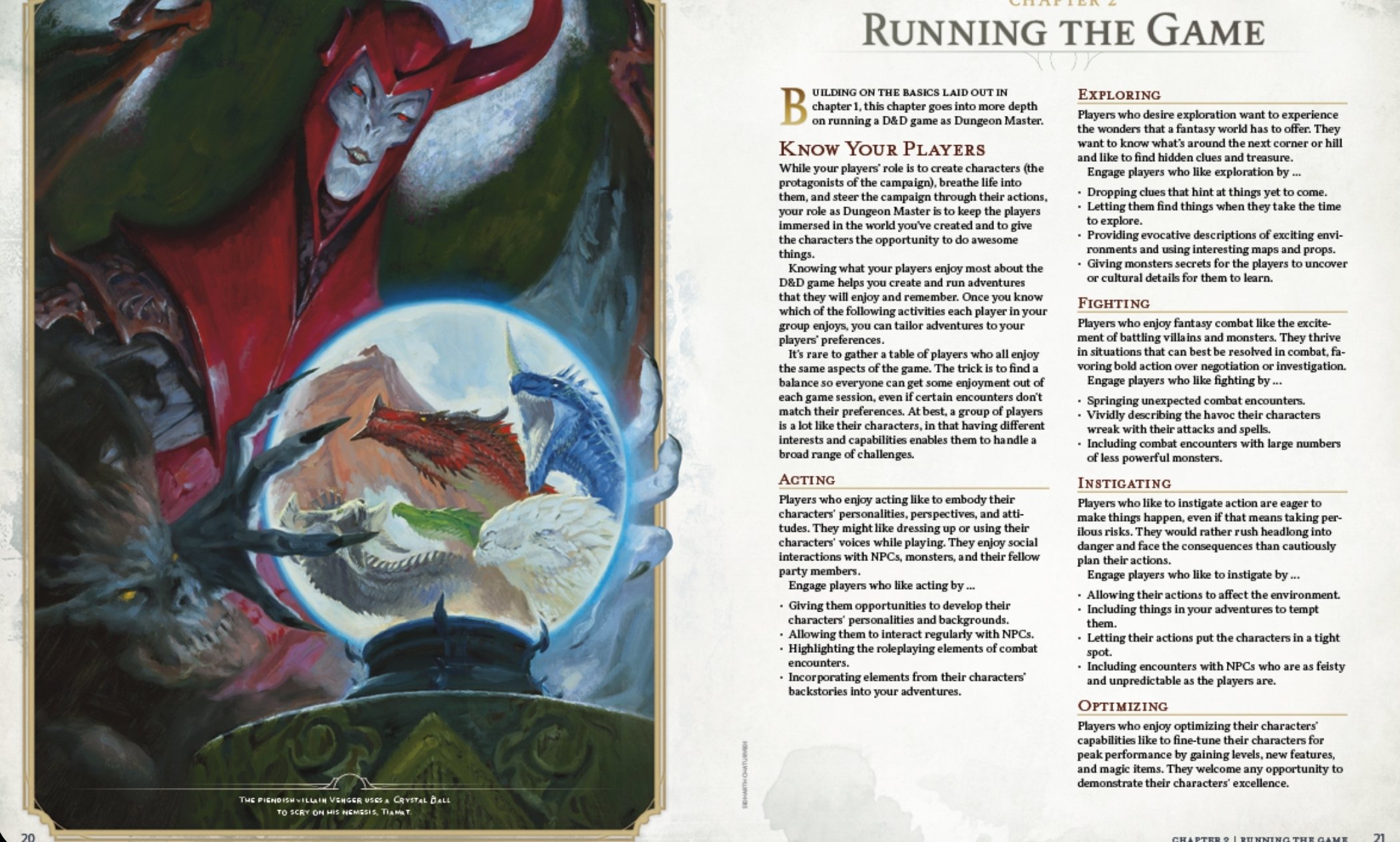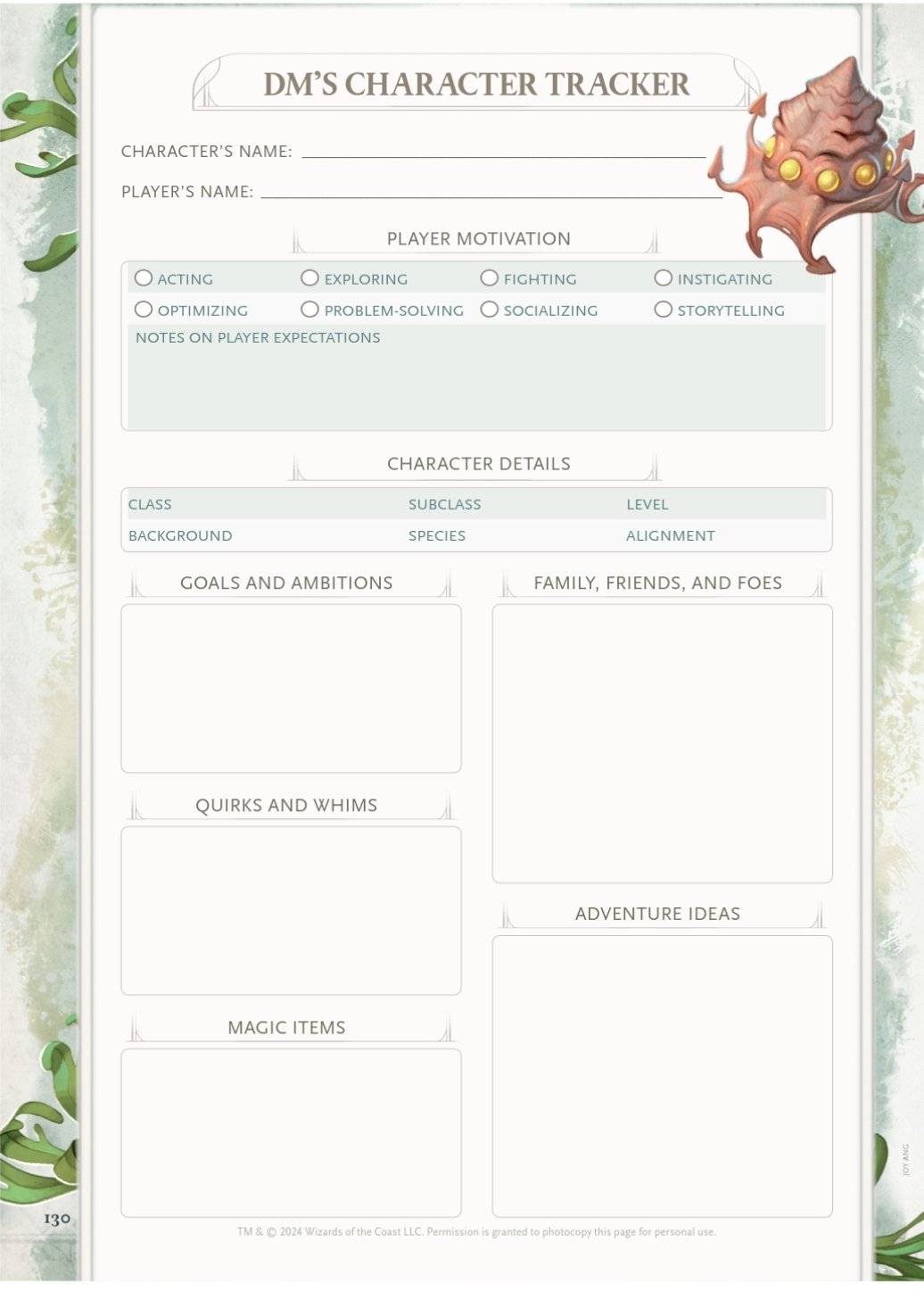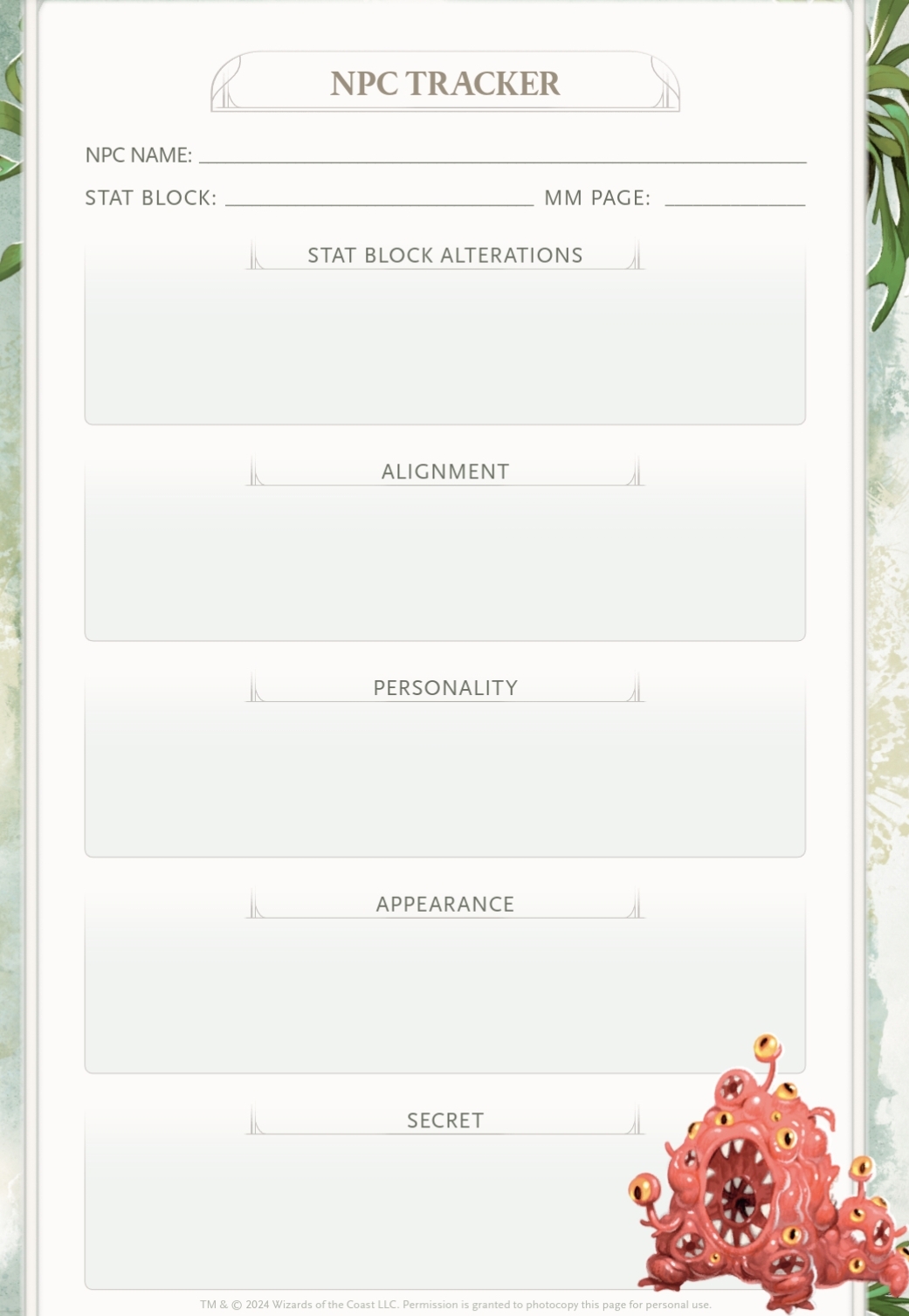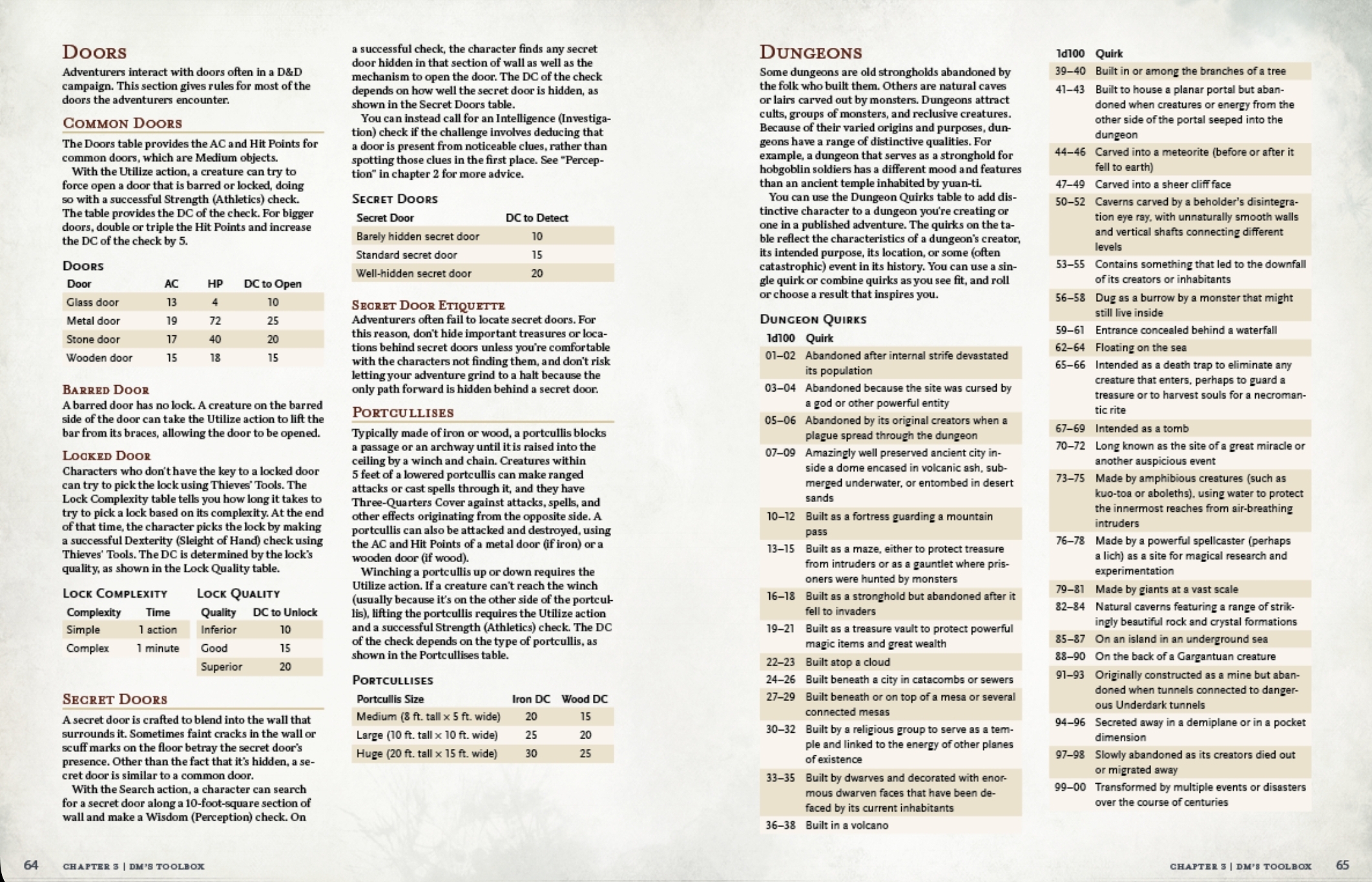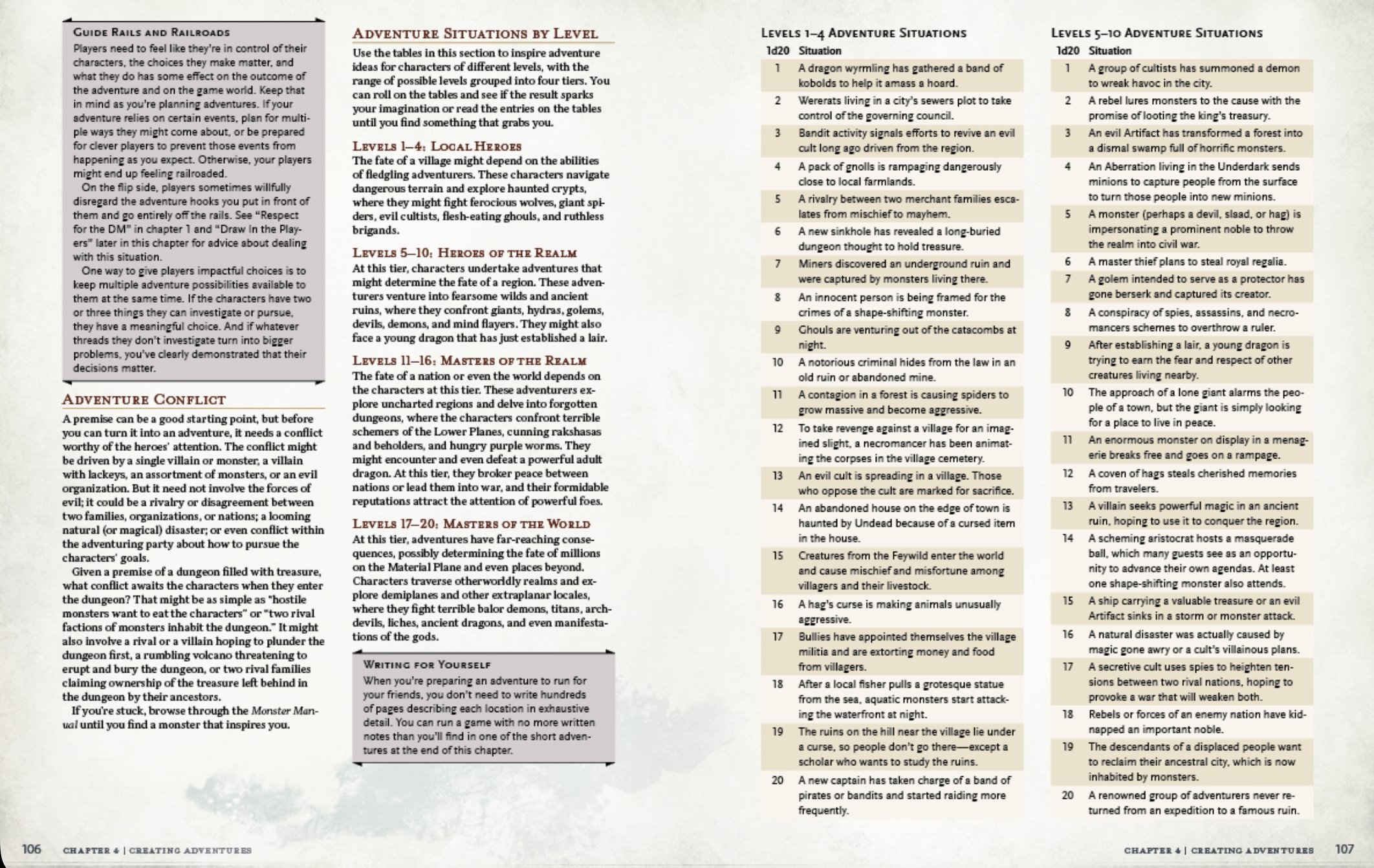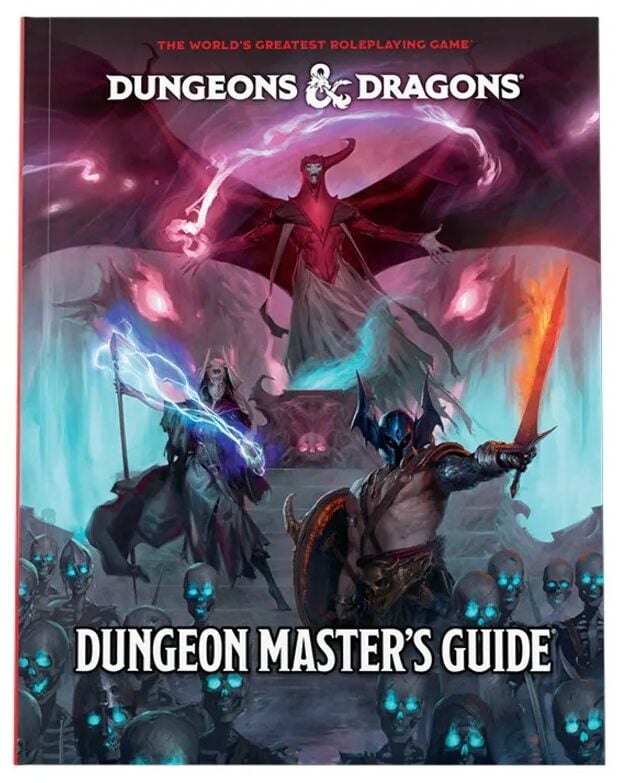From Tracking Sheets To Greyhawk, Here’s A Peek Inside The 5.5E ‘Dungeon Master’s Guide’
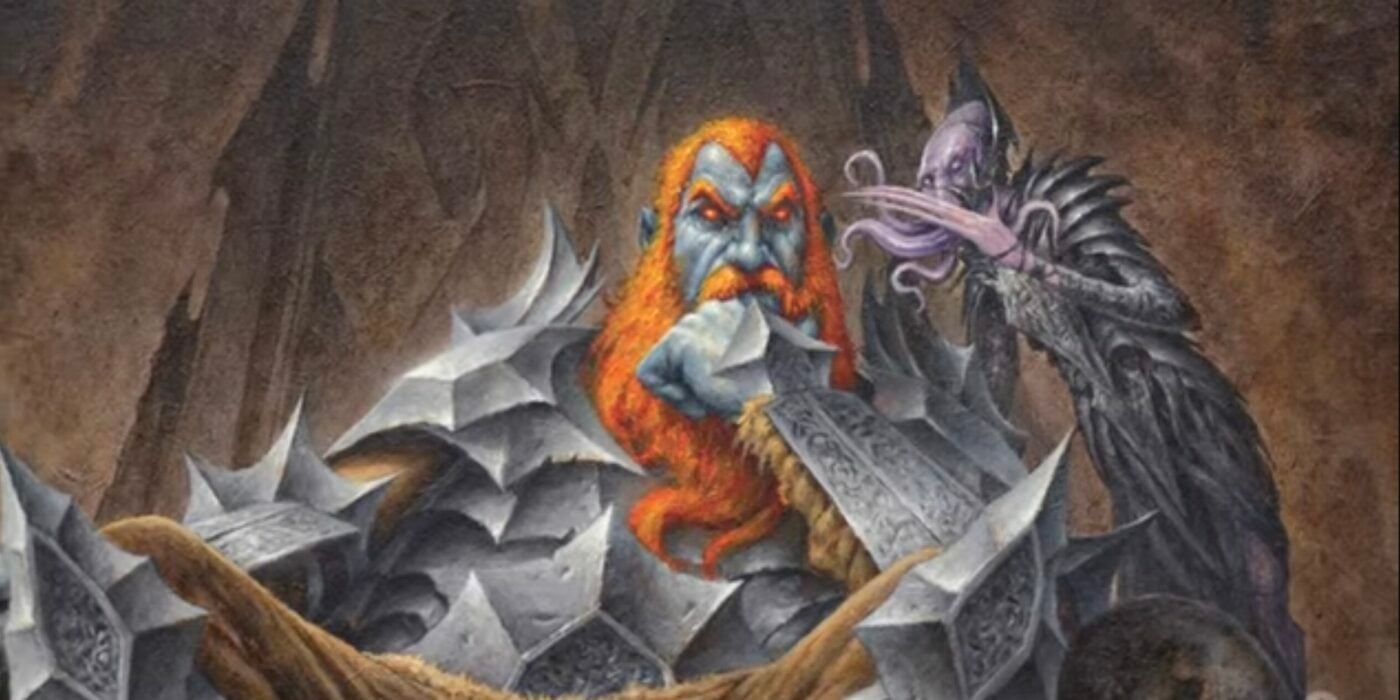
The new Dungeon Master’s Guide is packed with helpful info and guides for new and veteran DMs alike. Here’s a quick peek at what’s coming.
WotC has been showing off a lot about the new Dungeon Master’s Guide lately. You may have seen the Bastion System, the Lore Glossary, and, of course, the beefy Magic Item catalogue. But what you might not know is just how much of the new 5.5E DMG is littered with helpful guides, templates, and examples for new DMs especially but veteran DMs as well.
At a recent press briefing, we got a look inside the upcoming 5.5E Dungeon Master’s Guide. And while the full book won’t come out for another month or so yet, we did get to see some of the tools WotC has put in the hands of the DMs. From sample adventures with shorthand notes (surprisingly helpful) to various campaign trackers (of dubious use), even the example setting, Greyhawk, was done with an eye toward usability.
So here’s a look at some of the 5.5E Dungeon Master’s Guide Tools.
Tools and Toys in the 5.5E Dungeon Master’s Guide
We start with a glimpse of the familiar. Since the early days of the Dungeon Master’s Guide, one of the most practical pieces of advice is to know what your players want out of the game. There’s a lot of talk about how to figure out what makes people happy. But the problem is, people don’t often know what they really want. Only what they think they do.
The gulf between what people say they want and what they actually reach for could contain the whole vastness of the observable universe. This is why it’s helpful to have some descriptions that might help you, the DM, get a read for why your players keep talking to plants instead of kicking in the door of the dungeon. Or why do they insist on murdering every guard they come across when your careful, intrigue-laced web of plus threatens to entangle them? But I mention it because it seems like WotC items to do more than just say, “Here are some player types” and turn folks loose with that info. I worry, though, that it is a trap.
Trackers Galore
Pictured above is one of the many DM tracking tools included in the DMG. At first glance, it seems extremely useful. But I worry it’s a trap. Just like all the new day planners, bullet journals, and organizational tools out there that promise to sort your life out. Be sure that you don’t just sit there scrolling for hours, hoping to get a hit of that sweet, sweet dopamine, are traps. They only work if you actually use them.
And I’ve played D&D. I’ve seen what “notes” are in my fellow DM’s binders. Even if you’re running games professionally, this tracker is an aspiration. It’s an idea – a fantasy. But that’s D&D for you. It sells you the fantasy of playing D&D, whether or not you ever actually get around to it.
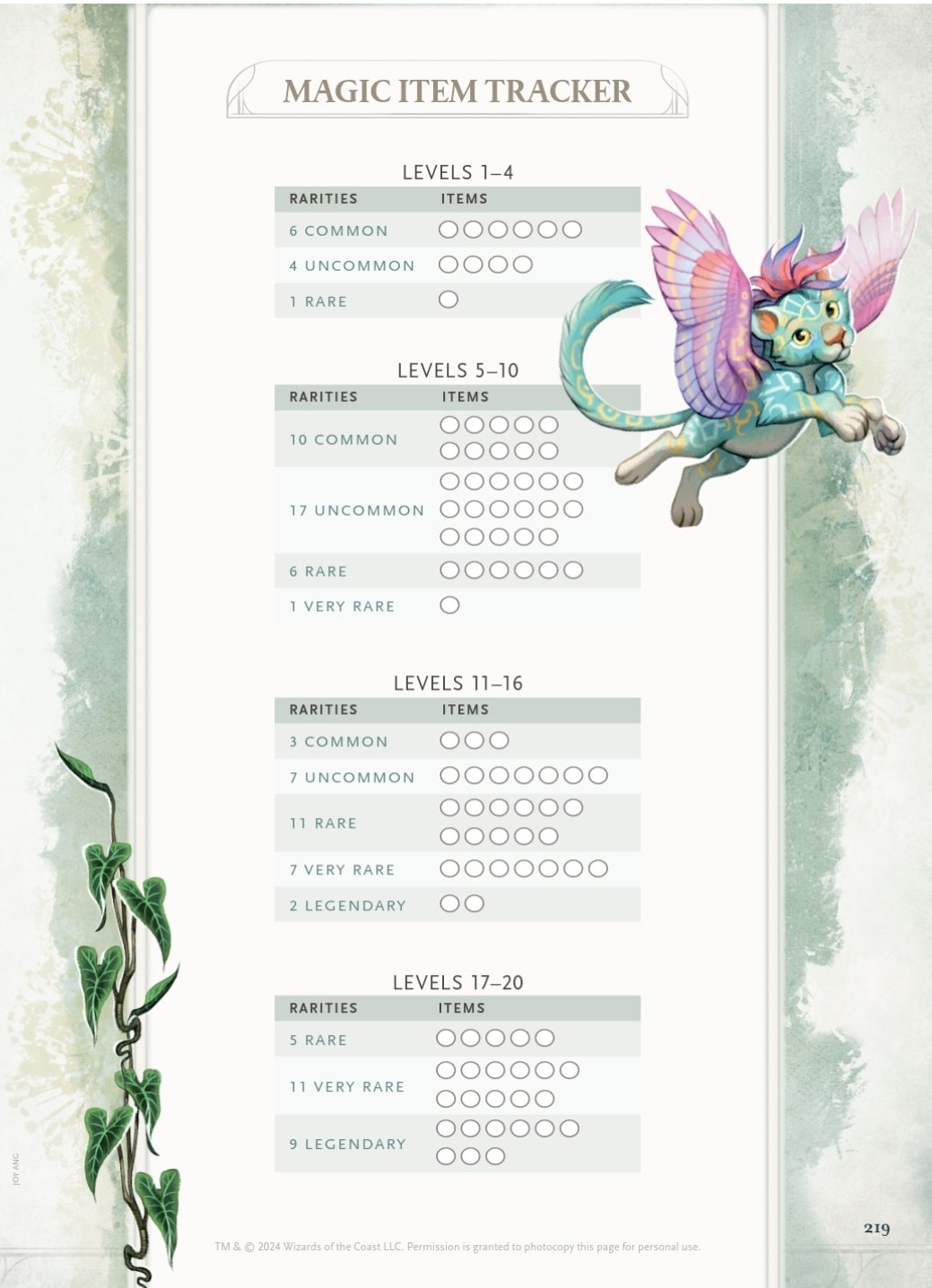
And some of these trackers look really helpful, too. Like just looking at them, I can think, “Oh yes, how wonderful. I can track how many magic items I’ve given out to players. So I’m not blindsided by the all-but-forgotten Immovable Rod this time.” But we all know these tools only work if you actually use them.
My heart goes out to the new generation of DMs who are going to look at these and discover that, no, in fact, they’re not the kind of person who gets their essay done two weeks before the due date, so they have time to revise it. The world just doesn’t let you live your life like that.
Still, I can see a lot of good coming from these. Even if you let them pile up, unfilled out, it’s at least raising awareness of things to keep track of in the jumbled mess of “bandit fortress – goblins?” and “King’s name – Rupert.” It will somehow contain the last six months of wonder you and your friends have been spinning together.
Tables For Days
Of much more use are the helpful templates and guides for creating adventures and all the stuff that goes therein. In the DM’s Toolbox, you’ll find guidelines and quick generation tables. You could, theoretically, use them if you were planning ahead, or more likely, when you realize you have no earthly idea what kind of door the Demon Cult Leader would be leaving behind.
Or when you forget to plan your adventure and think, “Oh, surely this week they’ll just go shopping; they just got a bunch of gold!” But then, with monstrous unanimity, the players turn towards you and say “we can shop after we head to the dungeon. Let’s head out now!” Then you can roll on the adventure table to try and figure out what the heck to do in a sweaty, dice-fueled panic.
Or maybe you’re organized. And if so, can I have a look at your DM notes? I can’t read what I wrote for the king’s name. It can’t be “Bobmund.”
At any rate, the DMG is packed with helpful tools. These can make a big difference, whether you’re using them as intended or in the messy way that real life often dictates. And you can see which kind of DM you’d be on November 12th!
Now, where did I write down who was secretly a mind flayer in the baron’s court?

